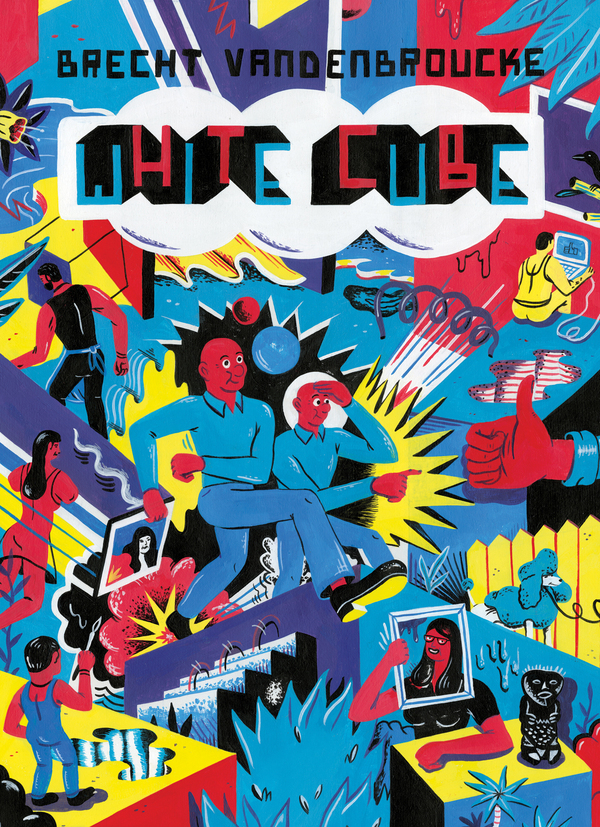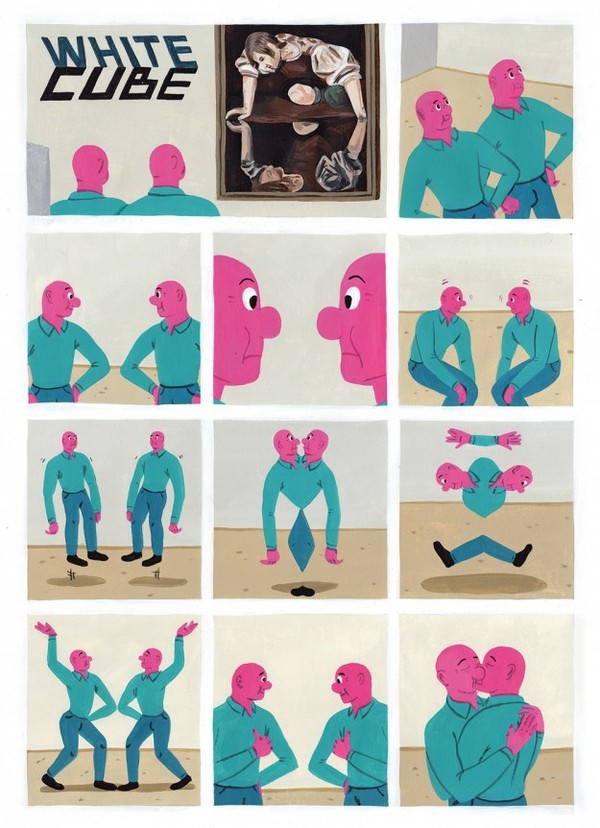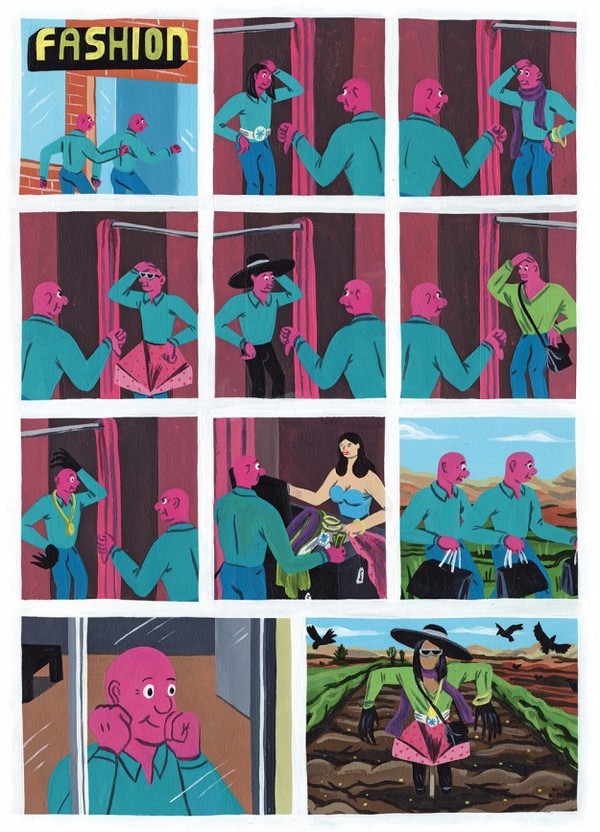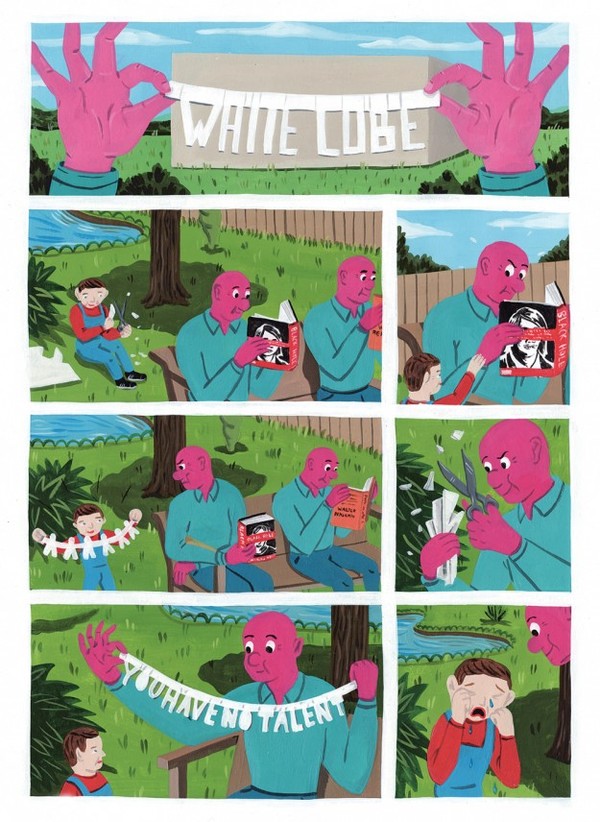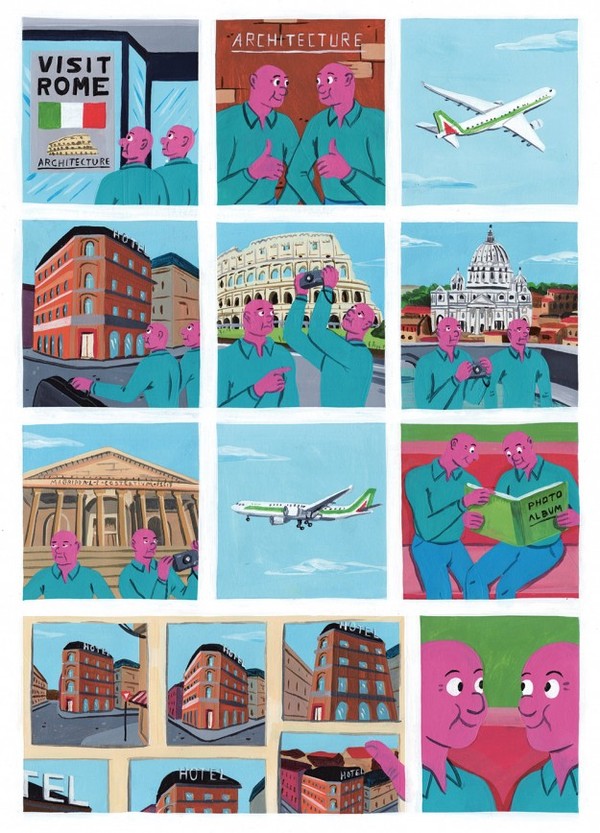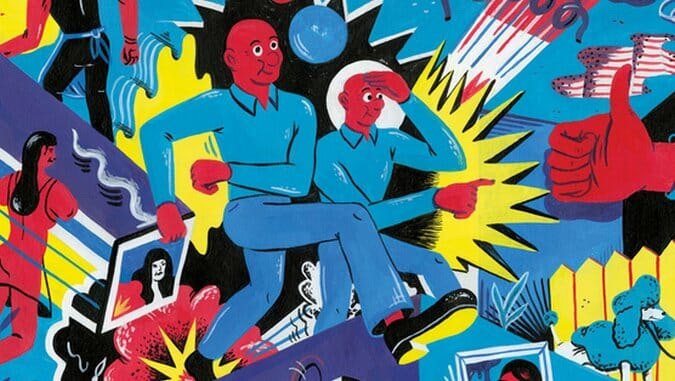
Writer/Artist: Brecht Vandenbroucke
Publisher: Drawn & Quarterly
Release Date: March 4, 2014
Named after Jay Jopling’s contemporary art gallery that presents the work of the Young British Artists (Tracey Emin, Damien Hirst, et al.), Brecht Vandenbroucke’s book focuses on contemporary artwork as its subject. That central decision would seem to be a misstep: few in the gallery scene care about comics, and few in the comics scene care about “high art.” The two spheres tend to look down on each other or, at best, ignore each other entirely. Perhaps those worlds interact with more freedom in Vandenbroucke’s home country of Belgium, but judging by the last page of the book, it’s doubtful.
Vandenbroucke dedicates White Cube to Brecht Evens: also Belgian, also a comics guy, also reliant on gorgeously vivid watercolors. But where Evens is known for his subtlety, even in addressing similar subject matter, Vandenbroucke is more of a prankster. His main characters, two identical, pink-skinned bald guys, observe, and then attempt, to irreverently interact with famous works of art. Instead, they show up in stories that last a few pages and exist entirely to set up a joke. It’s a difficult position to take in contemporary art, where Dada icon Duchamp set the standard early. Can you really make fun of something that’s already been there and done that to itself? Or do you come off as sophomoric and ignorantly dismissive? It depends on the joke.
Vandenbroucke’s spoof on Marina Abramovic’s “The Artist Is Present” is particularly successful, not because it takes a more intelligent tack, but because the material hasn’t been as thoroughly worked over by every amateur art critic with an ax to grind. The other observations are bitingly obvious: Mondrian is just a bunch of lines; Gordon Matta Clark was a destructive lunatic; Kazimir Malevich’s “Black Square” isn’t nearly as exciting out of context; Seurat’s stuff is blurry. These are statements that put one in the “my kid could do that”/John Stossel camp. Ultimately, the barbs are more annoying than amusing.
Every once in a while, though, Vandenbroucke lands his punchlines squarely, often in art jokes that don’t refer to a specific work or genre, but instead rely on visual conventions. One slow burner involves his pink men acting cruelly to a small boy who seems to enjoy their company. When the child shows the pair a picture — depicting the youngster walking hand in hand with the pink men, drawn as two stick figures, festooned with the label “My best friends! Forever!” — they dismiss him in scatological fashion. A minute later, two men with stick figure bodies and big pink heads (the true inspiration behind the drawing) show up to deal vengeance. It’s not a joke that’s utterly original, but it works much better than pointing out pretensions.
Vandenbroucke excels with his visuals. The content may not always be solid, but his images are bold and often lovely. Pages that don’t have a story instead serve as a “spot the work” game (Darger! Courbet! Leigh Bowery!); they’re fun and busy, endpapers included. If it weren’t so filthy-minded (and it is: sex, foul language, bad behavior, violence), the ideal place for this volume would be in a museum gift shop, where its obnoxious approach might stand out.
